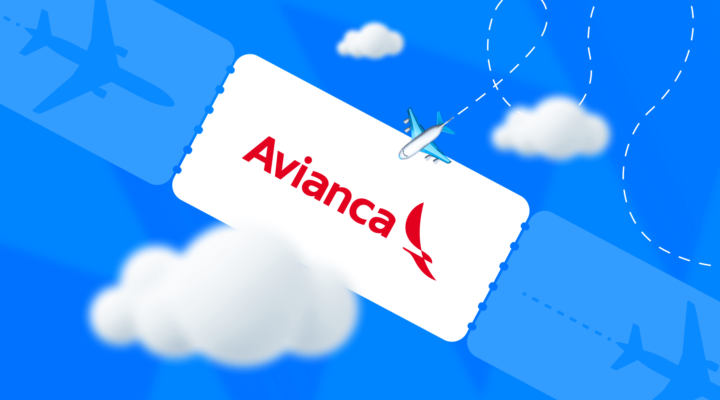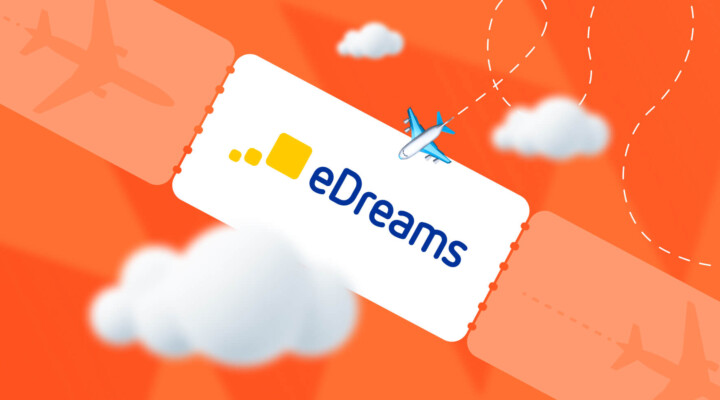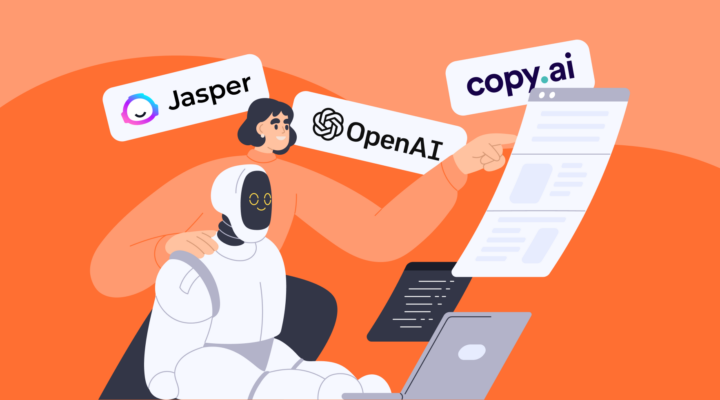Una is a travel blogger with a passion for vacations in warm and sunny places and the creator of the Wandernity.com blog, where she documents her travel experiences and creates inspirational articles about the places where she would want to go.
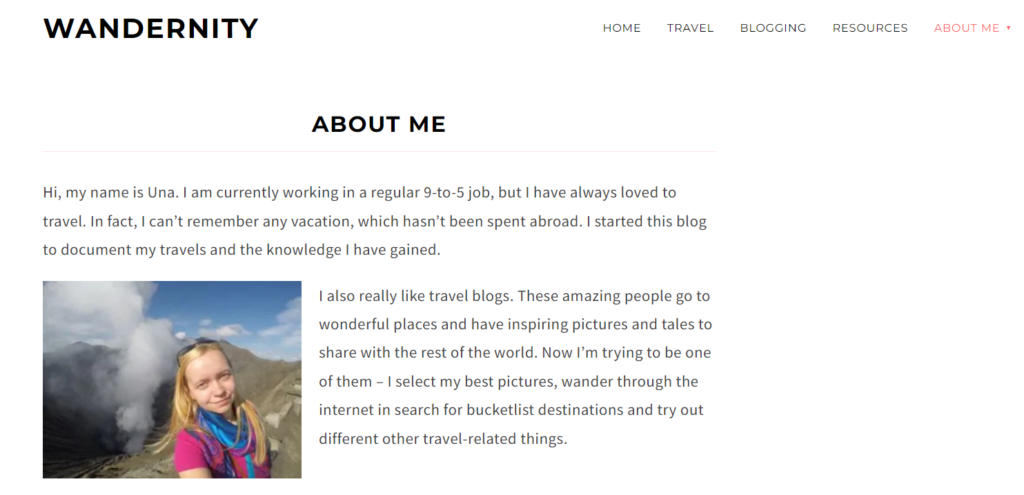
Wandernity.com is also a way to document her blogging journey, as starting a blog, coming up with the blog topics, optimizing blog posts for SEO and other parts of blogging are quite fascinating. Below, you’ll find Una’s advice and story written in the first person.
How Much Can You Earn With Affiliate Marketing?
There is no simple answer to this, as it depends on the size of your audience, the engagement, and how relevant the products and services that you recommend are to solving a problem your audience may have.
But a simple example could be this: Booking.com gives its affiliates around 4% of the value of the stay. So if you share a hotel recommendation and someone books a night in a 100$ room, then you get 4$. You can see that the amount is not big in the beginning, but as you grow your audience and add more affiliate links to the content that you create, there is an increasing chance to earn more each month.
From my personal experience, I earn around $20-$40 from different affiliates in a month depending on the season. It’s a good starting point for a side-hustle and the income is growing as my blog grows.
Affiliate marketing can be a great way to promote products and services that you believe in and that your audience may find useful.
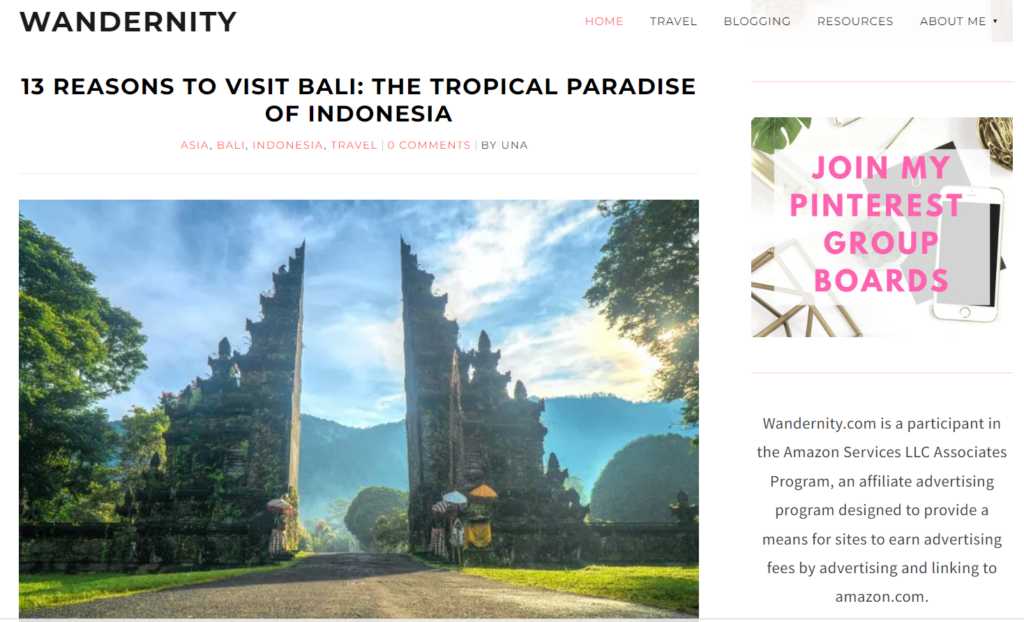
Who May Choose to Work in Affiliate Marketing?
Affiliate marketing is a great way for bloggers and social media influencers to monetize their content.
Affiliate marketing is also a great option for people who are looking to make some extra money on the side. You may work in a regular job and start a blog on the side to share your travel advice, and there you can use affiliate marketing as one of the monetization methods. If you have an engaged audience that is interested in travel, then affiliate marketing can be a great way to monetize that interest.
Here is a comparison of affiliate marketing and other travel blog monetization methods:
| Pros | Cons | |
| Affiliate marketing | Can be done from the very first post that you publish. Theoretically endless earning potential. When a link is placed it can generate earnings passively for the years to come. | If nobody clicks on the links and doesn’t purchase anything then you don’t earn anything. Companies may change their policy about the % of affiliate compensation or stop a program altogether. |
| Display advertisements | Can be turned on from the first few blog posts. Passive way of earning – you don’t have to do anything once the ads are turned on. | If there is a low visitor count the amount earned will be low and it will be hard to reach the payout threshold. People may click away from your blog if the ads are disruptive to the user experience. People may click on ads instead of your affiliate links that may lead to lower earnings. |
| Sponsored posts | You get to create content for the brands you love and use and get paid to do this. | Brands will want to collaborate only when the blog and social media presence is established and there is an engaged following. |
| Selling your own products | For digital products, this is a great passive way to earn as you create a product once and then can sell it as long as it’s relevant. The earnings per sale can be quite high if you create an expensive product. | In the travel niche, it may be hard to come up with a product that is unique and solves a problem for the customers so that they would be ready to pay for the product instead of getting something similar for free. For physical products the profit margin can be quite small and not worth the hassle of creating and marketing the product if your audience is small or not engaged. |
How Long Does the Job Take per Month?
It depends on your goals.
If you start a blog as a side-hustle or just share content on social media, it might take an hour or two of your week. But the results will be slower and the success might take months if not years.
You can also go all-in and produce content consistently every day. This increases the chances that there will be a bigger audience for what you create, more people will see and click on your affiliate links thus allowing you to earn more money in less time.
As for my experience, I spend around 3-4 hours a week on keyword research, writing new blog posts, and communicating within the niche. I do it mostly for fun as I write about the keywords of my past/upcoming trips or blogging itself. I like to experiment and see the results of different strategies that I try.
Is It Possible to Combine Development in Affiliate Marketing With Another Job?
It’s definitely possible to do affiliate marketing as a side hustle if you don’t expect to earn a full income out of it.
You can write one blog post per month, add some affiliate links to it, and after some time this content will accumulate and be able to bring in some earnings. But the more you create content that people search for and find useful, the more chances you have for earning affiliate commissions.
Which Are the Best Affiliate Marketing Programs for Travel Bloggers?
If you browse through some of the most popular travel blogs, you may notice that they promote different popular products and services with affiliate marketing links.
There are two options for bloggers – they can register to each product/service affiliate program separately or use a partner network with a lot of brands in one place.
For beginners in affiliate marketing, going with a platform like Travelpayouts.com is the smartest choice for several reasons:
- The most popular brands are on the platform and will quickly accept a new affiliate application. The application process is similar for all of the brands.
- The affiliate commissions from all of the different brands sum up together. If you are just starting out and earn a few dollars from each brand it’s much easier to reach the minimum payout threshold if all of these affiliate commissions are summed up together.
- It’s easier to manage different affiliate offers that you are adding to your blog as all of them are displayed in the same dashboard. You don’t have to open each brand’s own affiliate page to check the latest statistics.
However, one thing to remember when having all this big choice of brands to work with is that you don’t have to choose them all. Start by selecting 2-3 most well-known and grow from there.
Your audience will probably also respond better to a well-known and trusted brand that you recommend.
Where to Post Affiliate Links?
Two of the main sources for an audience that might be clicking on your affiliate links are a blog and social media.
A blog is something that you can control and grow as you wish. You can change the design, add any form of content, and engage with your audience in the comment section or even through a newsletter.
Social media, on the other hand, is quite out of your control. Yes, it may be easier to gain followers and share posts, and the posts can be shorter and easier to create, but the downside is that the algorithms control what the followers actually see. And if a social media network decides one day that they don’t support affiliate links anymore, then your posts won’t reach any audience.
Both of these options are good, and you may choose the one that you prefer based on your experience. The main thing is to post something. If you choose to start a blog, then you have to write posts to see some results, and the same is true for posting on social media.
Blog
A blog is a great way how to earn with affiliate marketing. If you are new and just thinking about starting a blog, don’t choose any of the free platforms for doing that. There is a reason why they are free, and it will be restrictive for the growth of the blog.
The most common platform for blogging is WordPress. You can easily start a new WordPress blog on any paid hosting service. They usually have a quick wizard of steps for setting up a blog that doesn’t involve any coding or much technical knowledge at all.
What to Write About?
This is a great question that you should consider before writing any blog post. The short answer is: do SEO keyword research.
SEO stands for Search Engine Optimization. What it means in simple terms is that you want to find a topic to write about that people are actually searching for on Google or other search engines. In addition, the topic has to be not quite competitive so that your new blog could actually rank for it and not be outperformed by much bigger blogs.
KeySearch is a good tool for starting out. It gives 5 free searches per day, which should be enough for a beginner.
Search for some travel-related keywords with some search volume and low difficulty. These should be the topics that you write about on your blog to get some actual audience.
Could You Earn in Travel if You Don’t Travel a Lot by Yourself?
If you can write blog posts that solve your audience’s problems then sure, you can earn in the travel niche even if you don’t travel much yourself.
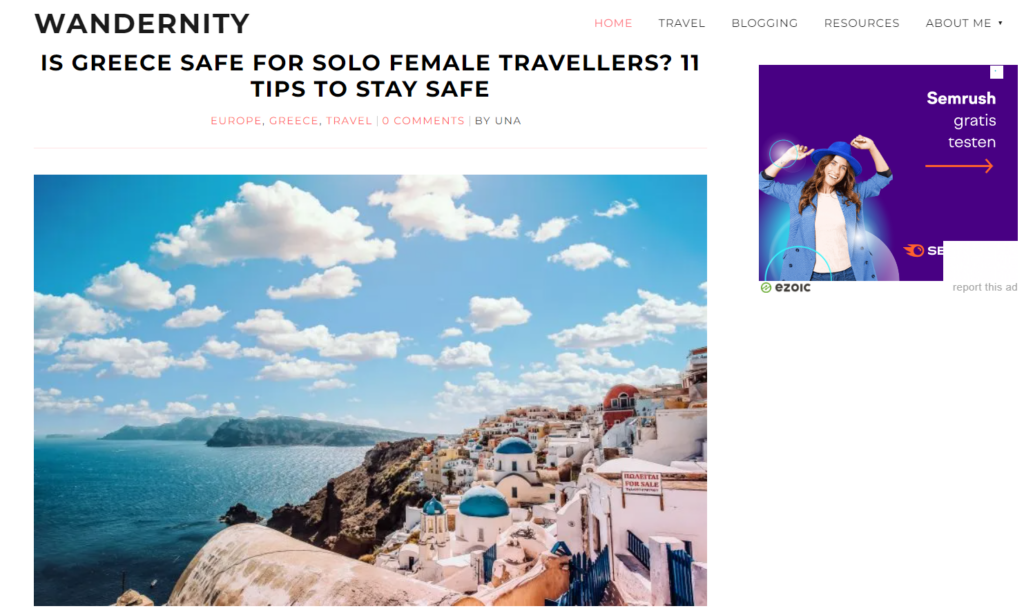
However, the question is – for how long can you create content about something that you haven’t experienced yourself?
If you won’t get bored of doing research about a destination and then never actually traveling to it, then you can choose the travel niche. If you feel that you’ll run out of inspiration, then maybe choose some other niche for your blog.
Types of Blog Content for Affiliate Marketing
If you concentrate on affiliate marketing, you have to take search intent into consideration when coming up with the blog posts.
For example, “The most beautiful cities in Germany” is not that great of a post for affiliate marketing. It’s inspirational, but that doesn’t mean that someone browsing through a list of cities all over Germany will actually click on a hotel link and reserve a stay.
Another example: “The best women’s hiking boots for the Camino de Santiago” is something quite specific and a person opening the post should actually be interested in buying the hiking boots. Sure, the audience for the post would be narrower, but they would be intent on buying the boots.
Some ideas for blog post types that work best for affiliate marketing:
- The best … for … (adding affiliate links to Amazon or other places selling things)
- Best hotels in a city (adding affiliate links to hotel platforms like Booking.com)
- Best tours from a city (adding links to guided tours from platforms like GetYourGuide.com)
- How to … (and the solution is a product or a service)

Here are some of blog posts with affiliate links from Wandernity.com:
- 14 Best Gifts for Hikers Under $50: The Ultimate List
- 31 Best Summer Travel Destinations In The USA
- 16 Most Beautiful Cities In Italy
Inspiration for Travel Blogging Topics
As a travel blogger, you can write many different types of blog posts. Here are some ideas on what you can focus on:
- Structure your blog based on guides about a certain city or country. For example, write posts about what to do, where to eat, where to stay, local recommendations, and so on.
- Base your blog around a certain type of travel, for example, hiking or solo female travel. Then you can write both destination guides and more general tips related to the chosen niche.
- Create inspirational blog posts about a region. For example, the most beautiful cities on the East coast.
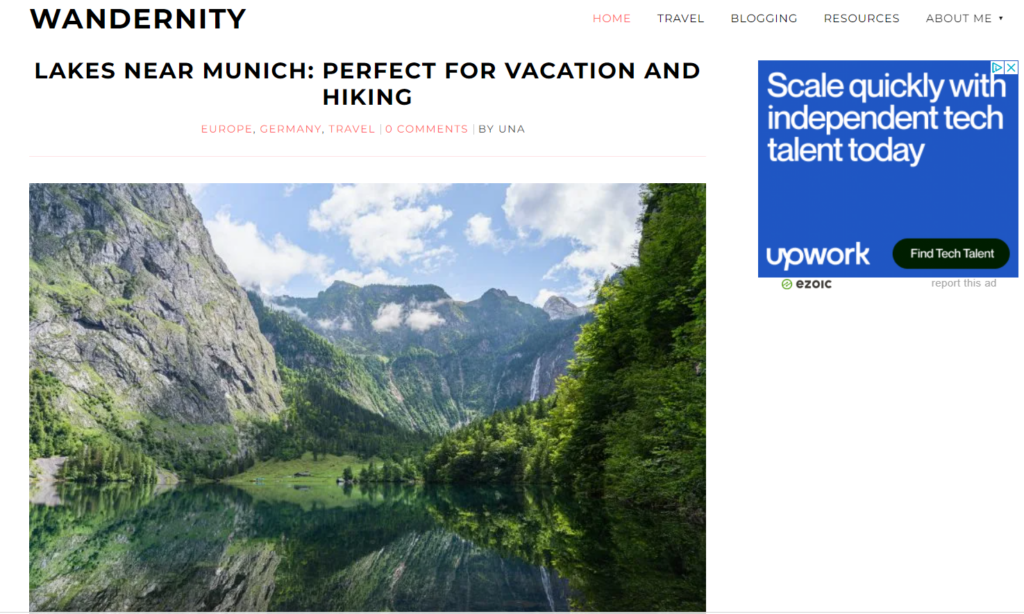
However, even when you choose some niche and come up with blog post topics that seem interesting for you, remember to do keyword research to make sure that there will be an audience for your posts and you aren’t the only one interested in the topic. Otherwise, it might be discouraging to put in the work for writing blog posts and in return not to receive any readers on your blog.
Social Media
While organic traffic from Google should be your main focus as a travel blogger, social media can also be used to direct traffic to your blog or affiliate links.
The most important thing is to be active on social media and post interesting things that will make people want to click through to the things that you recommend.
Some of the most popular social media platforms where you can post affiliate links are Instagram, Facebook, Pinterest, Youtube, and Twitter.
How to Add Affiliate Links on Social Media?
Usually, it’s possible to add an affiliate link to the posts that you create. Some platforms require you to upgrade to a business account to do that though. Here are two main things to remember when creating affiliate posts on social media:
Make them seem organic and like something that you would normally share. If you are just dropping links, chances are, either the algorithm of your followers will just ignore them. People seem to have developed a skill to ignore anything that looks like a plain advertisement online.
Disclose that you have used an affiliate link. This is required by the law and is just a common courtesy towards your followers. In most cases disclosing affiliate links on social media is as easy as adding #ad or #affiliate to the post.
Is It Possible to Earn Only on Social Media Without a Website or Blog?
You don’t have to have a blog to earn money from affiliate marketing on social media (though having a blog helps).
Youtube and Instagram seem to be the best platforms for doing so because your followers can relate to you, be invested in your regular activities, and feel a connection to your overall message. This helps to build trust in you and anything that you might recommend for solving the problems that your audience may have.
Conclusion
Affiliate marketing can be a great way to make money as a travel blogger, and social media is a powerful tool for directing traffic to your affiliate links.
For bloggers affiliate marketing is one of the best monetization methods. And with a blog, you have more control of what you can share.
Social media is also a great place where you can share affiliate links, but it works only if you have devoted followers.
There are a few things to remember when creating affiliate posts on social media: make them seem organic, disclose that you’re using an affiliate link, and choose well-known brands that your audience will trust.
By following these tips, you can start earning money from affiliate marketing on a blog or social media today!


